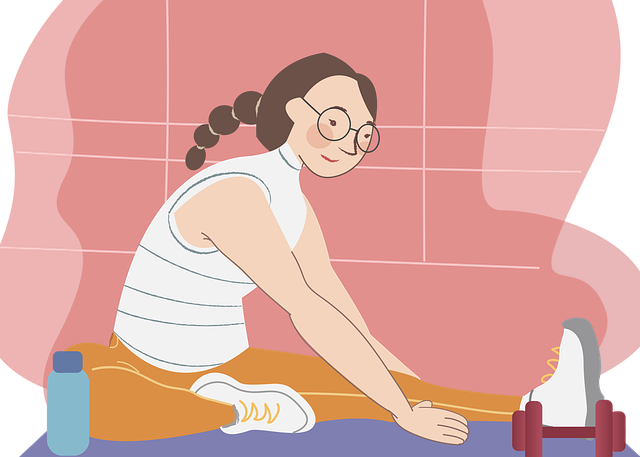Monthly Archives: July 2024
Children’s Respiratory Health: How to Use a Portable Nebulizer for Pediatric Care
Children’s respiratory health is a critical aspect of their overall well-being. Their developing airways make them more susceptible to respiratory issues such as colds, bronchiolitis, asthma, and croup. While many of these conditions resolve independently, some situations require additional support. In this guide, we’ll explore the challenges of managing children’s respiratory health and discuss how a portable inhaler nebulizer can be a valuable tool for pediatric care.
Understanding Respiratory Issues in Children
- Colds: Common culprits behind coughs, runny noses, and congestion.
- Bronchiolitis: Inflammation of the small airways in the lungs, often caused by respiratory syncytial virus (RSV).
- Asthma: A chronic condition leading to airway inflammation, wheezing, coughing, and shortness of breath.
- Croup: Inflammation of the upper airway, causing a barking cough and breathing difficulties.
Pediatric Nebulizer Therapy: What Parents Need to Know
- Prescription Required: Nebulizers are medical devices requiring a doctor’s prescription for the device itself and the medication used.
- Types of Medication: Nebulized medications include bronchodilators (to open airways), corticosteroids (to reduce inflammation), and mucus thinners (to clear congestion).
- Treatment Duration: Nebulizer treatments typically take 10-15 minutes, with frequency based on the child’s specific condition and doctor’s recommendations.
Making Nebulizer Use Comfortable for Kids
- Explain the Process: Talk to your child calmly about the nebulizer and how it will help them feel better.
- Create a Positive Environment: Let your child choose a favorite toy or book during treatment. Sing songs or tell stories to distract them from the mist.
- Choose the Right Mask: A well-fitting face mask is crucial. Look for child-sized masks with colorful designs or fun characters.
- Offer Rewards: Stickers or praise after successful treatments encourage cooperation.
Recognizing and Responding to Symptoms
Early intervention is crucial:
- Wheezing: High-pitched whistling sound during breathing.
- Rapid Breathing: More breaths per minute than usual for the child’s age.
- Struggling to Breathe: Visible use of accessory muscles (like chest muscles) to breathe.
- Fever: Along with other respiratory symptoms, it can indicate a serious infection.
- Poor Feeding or Lethargy: Unusual tiredness or lack of interest in eating may signal difficulty breathing.
If you notice any of these symptoms, consult your pediatrician immediately. They can diagnose the cause and recommend appropriate treatment, including nebulizer therapy.
READ ALSO: Reconsidering Your Drinking Habits
Long-Term Management
Beyond acute symptoms, consider:
- Frequent Handwashing: Prevents the spread of germs causing colds and respiratory illnesses.
- Allergy Management: Work with your doctor to minimize allergy-induced respiratory symptoms.
- Avoid Secondhand Smoke: It irritates airways and worsens respiratory problems.
- Healthy Lifestyle: Encourage a balanced diet and regular physical activity to support the immune system.
By understanding these challenges and using portable nebulizers when needed, you can help your child breathe easier and enjoy better respiratory health.
Can I Eat Oatmeal Every Day for Breakfast
A morning mainstay for many years, oatmeal brings to mind comforting kitchens and warming bowls. Can this healthy grain get boring if eaten every day? Oatmeal is great for breakfast every day, so let’s look at why that is and how to spice it up a bit.
Balanced Nutrition
Thanks to its balanced nutritional composition, oatmeal is a nutritional powerhouse. It’s high fiber content helps with digestion and makes you feel full for longer. Additionally, it includes beta-glucan, a soluble fiber that may aid in cholesterol reduction. Iron, magnesium, and B vitamins are just a few of the vital nutrients found in oatmeal, which can help keep you going strong for a long time.
Variety of Consumption Option
While oatmeal is great on its own, adding variety to your morning meal is the best way to keep from getting bored. Test out a variety of toppings and ingredients! Nuts, seeds, and fresh berries give it a blast of texture and taste. For an additional layer of decadence, try topping with honey, maple syrup, or nut butter. Warm spices such as ginger, cinnamon, or nutmeg can be a wonderful addition.
Other Uses
Oatmeal isn’t just for hot breakfasts anymore. For an easy grab-and-go choice, try overnight oats. To make overnight oats, just combine rolled oats with milk, yogurt, and any other ingredients you choose. One more tasty method to have this breakfast mainstay on the run is in the form of baked oatmeal bars.
Conclusion
Last but not least, eating oatmeal for breakfast every day is a great way to start the day off right. Enjoy the health advantages while adding variety to your meal with a plethora of toppings and ways to prepare it. Think of a cup of oats as a blank slate just begging to be decorated the next time you reach for breakfast.
Cultivating a Positive Mindset for Better Health and Relationships

Gratitude, a simple yet profound practice, can significantly enhance mental and physical health. By cultivating gratitude, you can foster a positive mindset that strengthens relationships and promotes well-being. Science backs up the benefits of gratitude, showing its powerful impact on our lives.
Research reveals that people who regularly practice gratitude experience lower levels of stress and depression. Gratitude can also improve physical health, boost the immune system, and lead to better sleep. Incorporating gratitude into your daily routine is a great place to start if you want to improve your well-being.
Practical Exercises to Cultivate Gratitude
Here are some simple yet effective exercises to help you develop a habit of gratitude:
- Keep a Gratitude Journal: Write down three things you’re grateful for daily. This practice shifts your focus from what’s wrong to what’s right in your life.
- Express Appreciation: Take time to thank the people in your life, whether through a handwritten note, a text, or a face-to-face conversation. Expressing appreciation strengthens relationships and fosters a positive environment.
- Reflect Daily: At the end of each day, spend a few minutes reflecting on the positive experiences you had. This can help reinforce a grateful mindset.
- Use Visual Reminders: Place reminders around your home or workspace to prompt you to consider what you’re grateful for. These can be sticky notes, photos, or objects with special meaning.
Practicing gratitude can transform your outlook on life. It encourages you to notice and appreciate the small joys and blessings that might otherwise go unnoticed.
Strengthening Relationships through Gratitude
Gratitude is a powerful tool for building and maintaining strong relationships. When you express gratitude to others, it not only makes them feel valued but also deepens your connection with them. Here are some ways gratitude can enhance your relationships:
- Improved Communication: Expressing gratitude fosters open and positive communication, which is essential for healthy relationships.
- Increased Trust and Loyalty: When people feel appreciated, they are likelier to trust and remain loyal to you.
- Greater Empathy: Practicing gratitude can increase your empathy towards others, helping you understand and connect with their feelings and experiences.
- Conflict Resolution: A grateful mindset can make navigating and resolving conflicts easier, as it encourages a focus on positive aspects rather than dwelling on negatives.
Inspirational Stories of Gratitude
Hearing about how others have benefited from gratitude can be incredibly motivating. Here are a few inspirational stories:
- John Kralik: John Kralik turned his life around by writing thank-you notes every day for a year. His practice of gratitude helped him overcome depression and improve his relationships and career.
- Maya Angelou: The renowned poet and author often spoke about the power of gratitude in her life. Despite facing numerous challenges, her practice of gratitude helped her maintain a positive outlook and inspire others.
- Nick Vujicic: Born without limbs, Nick Vujicic has faced significant obstacles. Yet, his attitude of gratitude and positivity has enabled him to lead a fulfilling life and motivate millions worldwide.
READ ALSO: Relax and Release: Yoga Poses for Stress Relief
Conclusion
Gratitude is a transformative practice that can improve your health, enhance relationships, and foster a positive mindset. By incorporating simple gratitude exercises into your daily routine, you can begin to experience these benefits firsthand. Remember, the power of gratitude lies in its ability to shift your focus from what you lack to what you have, creating a more fulfilling and joyful life.





